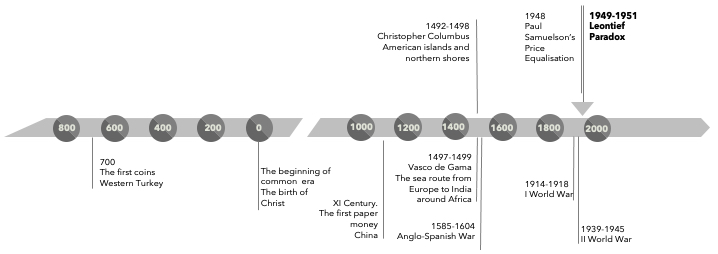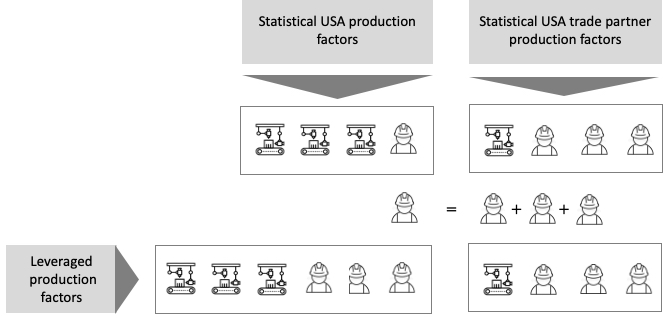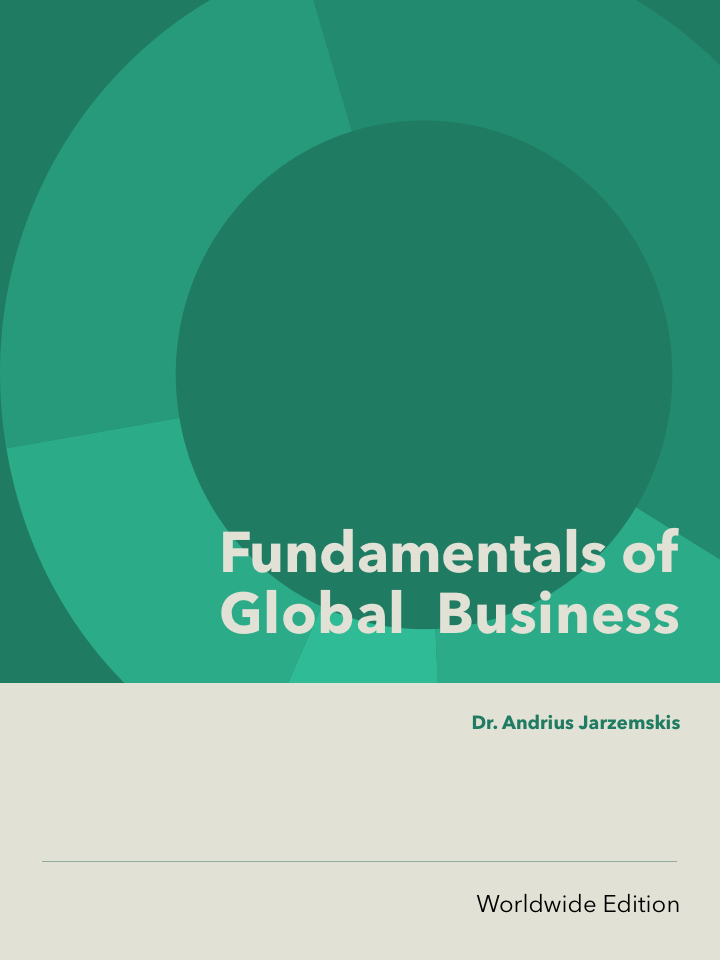The chapter describes Leontief’s observation that labour cannot be measured only in terms of the absolute number of workers but that it is important to look at their competencies, motivation, and skills. This section explains the implications of worker productivity for the labour intensity of an industry.
Wassily Leontief carried out the first test of the Heckscher-Ohlin theorem with statistical data in 1951. Leontief used US data from 1947 onwards. The USA was the most capital-intensive country in the world at that time, so Leontief hoped to find that, according to the Heckscher-Ohlin theorem, the US exported capital-intensive goods and imported labour-intensive goods. The US had relatively much more capital than human resources. The results of Leontief’s test differed from what he had expected and from what the Heckscher-Ohlin theorem should have given.
Ex. 1‑22 Vassilij Leontief’s paradox discovery in the context of other significant events

Keywords: II world war, Vassilij Leontief
Ex. 1‑23 Vassilij Leontief paradox

Keywords: production factors, labour intensity
Share or comment this information on your social media:
Check Ebook

The paperback book is being prepared for publication. The electronic book will be available for purchase from September 2024.
A.1 Theories of international economics
- Mercantilism
- Adam Smith and Absolute Advantage
- David Ricardo and Comparative Advantage
- Standard Theory of International Trade
- Karl Marx and Communism
- Hekscher – Ohlin Theory
- Paul A Samuelson Theory
- Leontief Paradox
- Rybczynski Theory
- John Hicks and Progress
- Economies of Scale Theory
- Contemporary Business Internationalisation Theories
- Questions for Chapter Review
- Chapter Bibliography
About author
The author has been teaching at several universities since 2005. 40+ scientific publications, 10+ international research projects. More about author.